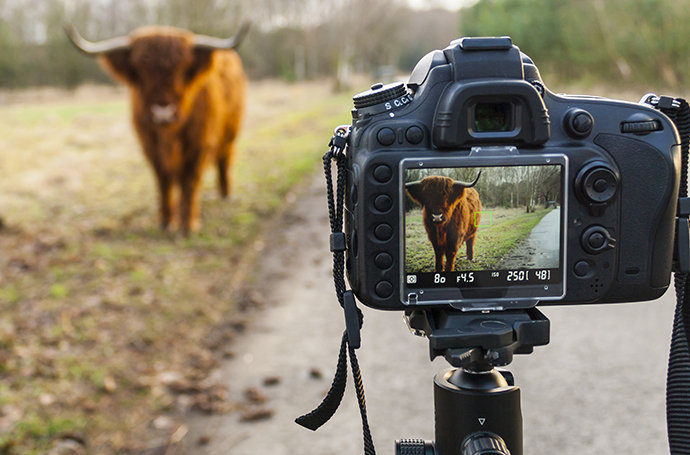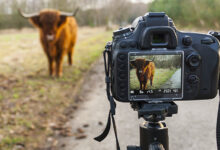Photeeq Depth of Field: Understanding the Power of Focus in Photography

Photography is not just about taking pictures; it’s about capturing the essence of a moment. The magic often lies in how different elements within a photo are in focus, creating a striking and artistic effect. One of the most important concepts to understand in photography is depth of field (DOF). In this article, we’ll dive deep into the concept of photeeq depth of field, explore how it works, and learn how to use it to enhance your photography skills.
What Is Depth of Field?
At its core, depth of field refers to the range of distance within a photo that appears acceptably sharp and in focus. This concept is crucial because it helps photographers decide which parts of an image should be in focus and which should be blurred. The photeeq depth of field refers specifically to the way this focus is manipulated using certain camera settings and techniques to create a particular aesthetic effect.
How Does Depth of Field Work?
The depth of field is influenced by three key factors:
- Aperture: The size of the lens opening that lets light into the camera.
- Focal Length: The distance between the lens and the image sensor.
- Subject Distance: The proximity of the subject to the camera.
Together, these elements determine how much of a scene is in focus and how much is blurred, creating either a shallow or deep depth of field. With the photeeq depth of field, photographers can control how the subject stands out in the shot while keeping the background either in sharp detail or wonderfully out of focus.
Shallow vs. Deep Depth of Field
The photeeq depth of field can be classified into two main categories: shallow depth of field and deep depth of field. Each has its unique visual appeal and is used in different types of photography.
Shallow Depth of Field
A shallow depth of field occurs when only a small portion of the image is in focus, and the rest is blurred. This technique is often used in portrait photography to isolate the subject from the background, creating a stunning effect. A shallow depth of field is achieved by using a wide aperture (small f-number), a longer focal length, and positioning the subject closer to the camera.
Benefits of Shallow Depth of Field:
- Highlights the subject by blurring distractions in the background.
- Creates a dreamy, artistic look in photos.
- Ideal for portraits, close-ups, and macro photography.
Deep Depth of Field
On the other hand, a deep depth of field ensures that most of the image, from the foreground to the background, is in focus. This is commonly used in landscape photography or when the photographer wants every detail to be crisp and sharp. A deep depth of field is achieved by using a smaller aperture (larger f-number), a shorter focal length, and increasing the distance between the camera and the subject.
Benefits of Deep Depth of Field:
- Makes all elements of the photo sharp and clear.
- Perfect for capturing vast landscapes, architectural shots, and group photos.
- Helps tell a complete story within one frame.
Understanding the Photeeq Depth of Field in Photography
When we talk about photeeq depth of field, we are specifically referring to the camera’s ability to manage these factors—aperture, focal length, and subject distance—to produce images with the desired level of sharpness or blur. The photeeq depth of field is not just about technical settings; it’s about creativity and the visual impact that different focus choices can bring to a photo.
The Role of Aperture in Photeeq Depth of Field
Aperture plays a major role in determining the photeeq depth of field. The aperture is essentially the lens opening that controls how much light enters the camera. A wider aperture (a smaller f-number like f/1.4 or f/2.8) results in a shallow depth of field, where only the subject or a specific area is in focus. This is often used in portrait or product photography to isolate the subject from the background.
On the other hand, a narrower aperture (a larger f-number like f/16 or f/22) increases the depth of field, making more of the scene appear sharp. This is ideal for situations where you want both the foreground and background in focus, such as in landscape photography.
Focal Length and Photeeq Depth of Field
Focal length refers to the distance between the camera’s sensor and the lens. Lenses with longer focal lengths (e.g., 85mm or 200mm) tend to produce a shallower depth of field, blurring the background and focusing sharply on the subject. Lenses with shorter focal lengths (e.g., 18mm or 35mm) offer a deeper depth of field, making more of the scene appear in focus.
When using the photeeq depth of field, understanding how focal length interacts with aperture settings will allow you to creatively adjust focus and blur effects. For example, portrait photographers often use long focal lengths to create a beautiful bokeh effect in the background, while landscape photographers favor wide-angle lenses to keep everything in sharp focus.
Subject Distance and Its Effect on Depth of Field
The distance between the subject and the camera also significantly affects the photeeq depth of field. When you move closer to your subject, the depth of field becomes shallower, and the background will appear more blurred. This is often used in macro photography to isolate small objects or details.
Conversely, when you increase the distance between you and your subject, the depth of field becomes deeper, and more of the scene is in focus. This is ideal when photographing wide landscapes or architectural scenes.
The Bokeh Effect: How Photeeq Depth of Field Creates Beautiful Backgrounds
One of the most popular techniques in photography involving photeeq depth of field is the creation of the bokeh effect. Bokeh refers to the aesthetic quality of the blur in out-of-focus areas of an image, typically in the background.
- A shallow depth of field helps produce a creamy, soft bokeh effect, which isolates the subject and gives the image a dreamy or cinematic look.
- The shape and quality of the bokeh depend on the aperture shape. A round aperture creates a smooth bokeh, while hexagonal or octagonal apertures create more angular bokeh shapes.
For photographers who enjoy portrait photography, the bokeh effect can add a level of sophistication to an image, making it appear more professional and artistic.
Practical Tips for Mastering Photeeq Depth of Field
Now that you have a better understanding of how photeeq depth of field works, let’s look at some practical tips to help you take full advantage of this powerful technique.
- Experiment with Aperture Settings
To gain control over your depth of field, start experimenting with different aperture settings. Use a wide aperture (f/1.4 or f/2.8) for portraits and a narrow aperture (f/8 to f/22) for landscapes or group shots.
- Choose the Right Focal Length
When aiming for a shallow depth of field, consider using a longer lens (e.g., 85mm or 100mm). For landscapes and wide shots, opt for a shorter focal length (e.g., 24mm or 35mm) to keep everything in focus.
- Get Close to Your Subject
If you’re after that beautiful bokeh or want to isolate a small detail in your shot, get close to your subject. The closer you are, the shallower your depth of field will be.
- Adjust the Distance to the Background
If you’re working with a shallow depth of field and want to make the background appear more blurred, increase the distance between your subject and the background. This will amplify the blur effect and help separate the subject from the surroundings.
- Focus on the Right Area
When working with shallow depth of field, be intentional about where you focus. Use your camera’s focus points to select the subject or area you want to remain sharp while allowing other elements to fade into blur.
Conclusion: The Power of Photeeq Depth of Field in Photography
The photeeq depth of field is an incredibly versatile tool that can dramatically change the feel and impact of your photos. Whether you’re aiming for a dreamy portrait with a beautifully blurred background or a crisp landscape where every detail is sharp, understanding the depth of field is essential to taking your photography to the next level.
By mastering aperture settings, focal lengths, and subject distances, you can create stunning images that not only capture moments but also convey mood, emotion, and artistic vision. So, next time you’re out with your camera, remember the magic of photeeq depth of field and how it can transform your photography. Happy shooting!
You may also read:
Maine Cabin Masters Death: What Happened to the Iconic Show and Its Cast?
